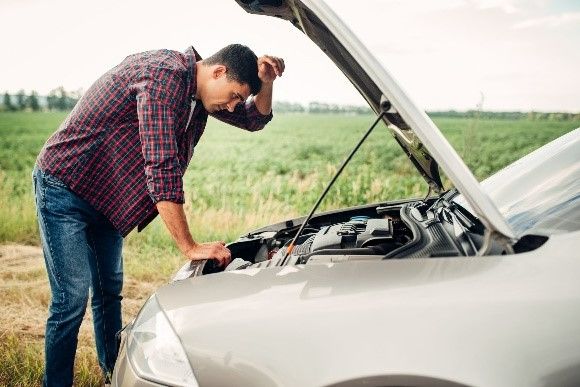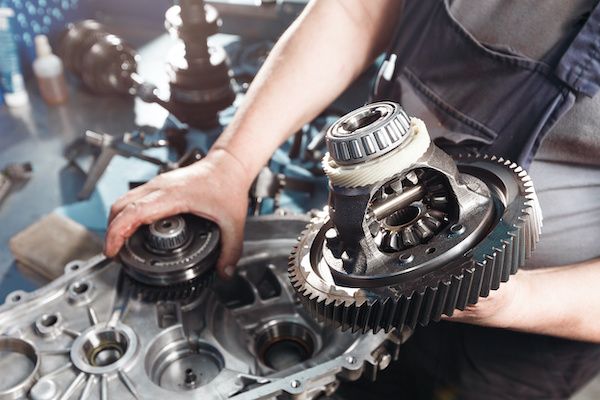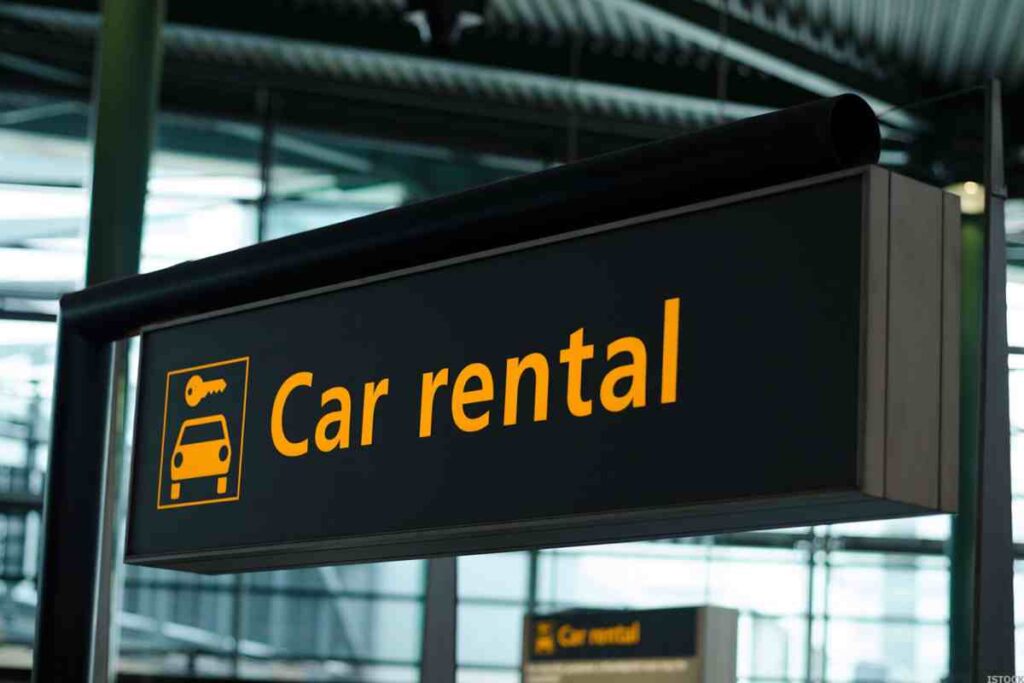When your car’s transmission fails, it can be a stressful and expensive problem. Many car owners wonder if their auto insurance will cover the cost of fixing or replacing the transmission. In this article, we’ll explore whether auto insurance can help with transmission failure. We’ll look at different types of coverage, what is usually included, and what isn’t. By the end, you’ll have a clear idea of what to expect from your insurance policy regarding transmission issues.
When Auto Insurance Covers Transmission Failure?

Auto insurance typically does not cover transmission failure if it is due to normal wear and tear or lack of maintenance. However, there are specific situations where your auto insurance might cover transmission failure:
- Collision Coverage: If your transmission is damaged in a car accident, collision coverage may help pay for the repairs. This applies when your vehicle collides with another car or an object such as a building or fence.
- Comprehensive Coverage: If your transmission is damaged due to events like theft, vandalism, fire, or natural disasters, comprehensive coverage might cover the repair costs. For example, if a tree falls on your vehicle during a storm and damages the transmission, comprehensive coverage would likely pay for the repairs.
- Underinsured/Uninsured Motorist Coverage: If another driver damages your transmission and they don’t have adequate insurance, this coverage may help pay for the repairs. This is particularly useful if the at-fault driver is uninsured or underinsured.
- Mechanical Breakdown Insurance: Some insurance companies offer mechanical breakdown insurance, which can cover transmission repairs due to mechanical failures not caused by accidents. This type of coverage is similar to an extended warranty and can be beneficial for newer vehicles.
- Vehicle Protection Plans: Certain insurers, like Progressive, offer vehicle protection plans that can cover transmission repairs beyond the manufacturer’s warranty. These plans typically require the vehicle to have specific coverages such as liability, comprehensive, collision, rental car, and roadside assistance with trip interruption.
Common Exclusions
Auto insurance policies often have specific exclusions when it comes to covering transmission failure. Here are some common exclusions:
- Wear and Tear: Transmission failure due to regular wear and tear is typically not covered. This is considered a part of the vehicle’s normal aging process.
- Lack of Maintenance: If the transmission fails because the vehicle was not properly maintained, such as not changing the transmission fluid regularly, the insurance policy will usually not cover the repairs.
- Mechanical Breakdown: Standard auto insurance does not cover mechanical breakdowns that are not related to an accident or covered event. This includes internal failures of the transmission due to manufacturing defects or other mechanical issues.
- Intentional Damage: Any intentional damage to the transmission, such as tampering or misuse, will not be covered by auto insurance.
- Illegal Activities: If the transmission is damaged while the vehicle is being used for illegal activities, the insurance policy will exclude coverage.
- Modifications: Damage resulting from modifications or alterations to the vehicle that affect the transmission may not be covered. This includes aftermarket parts or performance enhancements.
- High-Risk Activities: If the vehicle is used for racing, stunt driving, or other high-risk activities, any resulting transmission damage is typically excluded from coverage.
Understanding these exclusions can help you better manage your expectations and take preventive measures to avoid transmission failure.
Filing a Claim for Transmission Failure
Here’s a step-by-step guide on how to file a claim for transmission failure, along with the documents and evidence required to support the claim:

1. Review Your Insurance Policy
Before filing a claim, review your auto insurance policy to understand what is covered and what isn’t. Look for specific details about coverage for mechanical failures, including transmission failure.
2. Contact Your Insurance Provider
Notify your insurance provider about the transmission failure as soon as possible. Provide them with all necessary details about the incident.
3. Gather Necessary Documents
- A copy of your auto insurance policy.
- Vehicle registration documents.
- A copy of your driver’s license.
- Records of regular maintenance and service.
- Estimates from certified mechanics or repair shops.
- Clear photos and videos of the damaged transmission.
- If applicable, a copy of the police report.
- Statements and contact information of any witnesses.
- A detailed report from a certified mechanic explaining the cause of the transmission failure and necessary repairs.
4. Collect Evidence
- Take clear photos and videos of the damaged transmission and any other related damage.
- If the transmission failure was caused by an accident, obtain a copy of the police report.
- If there were any witnesses to the incident, collect their statements and contact information.
- Get a detailed report from a certified mechanic explaining the cause of the transmission failure and the necessary repairs.
5. Submit the Claim
Fill out the claim form provided by your insurance company. Ensure all required fields are completed accurately. Attach all the gathered documents and evidence to support your claim. Submit the claim form and supporting documents to your insurance provider. This can usually be done online, via email, or through postal mail.
6. Follow Up
After submitting your claim, follow up with your insurance provider to ensure they have received all necessary documents and information. Keep track of any communication with your insurance provider, including emails and phone calls.
7. Inspection and Assessment
Your insurance provider may send an adjuster to inspect the damaged transmission and assess the claim. Be prepared to provide any additional information or documentation they may request.
8. Claim Approval and Repairs
Once your claim is approved, your insurance provider will inform you of the next steps. This may include taking your vehicle to an approved repair shop for the necessary repairs. Keep all receipts and invoices related to the repairs for future reference.
By following these steps and providing the required documents and evidence, you can increase the chances of a successful claim for transmission failure.
Cost of Transmission Repairs

The cost of transmission repairs can vary widely depending on several factors, including the type of transmission, the extent of the damage, and your location. Here are some general estimates to give you an idea:
Average Costs
- Repair Costs: The average expense for repairing a transmission is approximately $900. This may involve tasks such as changing the fluid, adjusting linkages, replacing a sensor, or addressing issues with the computer system. For basic repairs like clutch replacement in a manual transmission, the costs typically range from $1,000 to $1,500.
- Rebuild Costs: Rebuilding a transmission generally involves removing the transmission, thoroughly inspecting and cleaning its components, and then reinstalling it. The cost for a rebuild usually falls between $2,000 and $3,500, which is roughly half the cost of a full replacement. However, the price may increase depending on the severity of the damage.
- Replacement Costs: The cost to replace a transmission can range from $1,800 to $3,400, with the possibility of reaching up to $7,000 for luxury or rare vehicles. The expense varies based on the type of transmission, with remanufactured units priced between $1,300 and $3,400, used or salvage transmissions costing between $800 and $1,500, and rebuilt ones ranging from $1,100 to $2,800. Other factors influencing the cost include labor charges, which can be anywhere from $500 to $1,200, and the complexity of accessing the transmission or requiring specialized parts.
Factors Affecting Costs
- Manual vs. Automatic: Manual transmissions are generally less expensive to repair or replace than automatic transmissions.
- Luxury or High-Performance Vehicles: These vehicles often have specialized transmissions, which can increase the cost due to more complex components and limited availability.
- Minor vs. Major Repairs: Minor repairs, such as replacing a solenoid, are less costly than major repairs, like rebuilding the entire transmission.
- Labor Rates: Labor costs can vary significantly depending on your location. Urban areas tend to have higher labor rates compared to rural areas.
- Rebuilt or Remanufactured vs. New: Rebuilt or remanufactured transmissions are more affordable alternatives to new ones. These options involve thorough inspections and replacement of worn parts, making them reliable yet cost-effective.
Additional Costs
- Labor: Labor costs alone can range from $500 to $1200.
- Taxes and Fees: Don’t forget to factor in taxes and any additional fees that may apply.
Tips for Cost Reduction
- Regular Maintenance: Keeping up with regular maintenance can help prevent major transmission issues.
- Shop Around: Get multiple quotes from different repair shops to find the best price.
- Consider Used Parts: In some cases, using used or refurbished parts can save money.
Understanding these costs and factors can help you make informed decisions about repairing or replacing your transmission.
Extended Warranties and Mechanical Breakdown Insurance
When it comes to protecting your vehicle from unexpected repairs, both extended warranties and mechanical breakdown insurance (MBI) offer valuable coverage. However, they differ in several key aspects. Let’s explore both options:
1. Extended Warranties
Extended warranties, also known as vehicle service contracts, are typically offered by the vehicle manufacturer or third-party providers. They cover repairs for specific parts and systems that fail due to defective materials or improper manufacturing. Coverage usually includes major components like the engine, transmission, and electrical systems.
Extended warranties have a fixed duration, often ranging from a few years to a certain mileage limit. Once the warranty period expires, you are responsible for all repair costs.
Extended warranties often require a high upfront cost. Some providers may offer financing options to spread out the payments.
Repairs must typically be performed at authorized dealerships or service centers. This can limit your options for where you can get your vehicle repaired.
2. Mechanical Breakdown Insurance (MBI)
MBI offers broader coverage than extended warranties, including repairs for mechanical issues not related to accidents. It covers most original mechanical parts of the car, except for routine maintenance and wear and tear.
MBI is available for new or leased cars that are less than 15 months old and with less than 15,000 miles. You can renew MBI for up to seven years or 100,000 miles, whichever comes first.
MBI typically has a lower upfront cost compared to extended warranties. You can choose between pay-as-you-go monthly payments or annual payments.
MBI allows you to get repairs done at any service center, giving you more flexibility. Some providers offer additional benefits like travel reimbursement and rental car coverage during repairs.
Is It Cheaper to Get Car Insurance Through A Broker?
Both extended warranties and mechanical breakdown insurance can provide valuable protection for your vehicle. The choice between the two depends on your specific needs, budget, and preferences.
FAQs
Q 1. Can I drive my car with a failing transmission?
Ans. Driving with a failing transmission is not recommended as it can cause further damage to the vehicle and may lead to more expensive repairs. It’s best to have the transmission inspected and repaired as soon as possible.
Q 2. How can I tell if my transmission is failing?
Ans. Common signs of transmission failure include slipping gears, delayed or rough shifting, unusual noises (such as grinding or whining), fluid leaks, and a burning smell.
Q 3. Are there any preventive measures I can take to avoid transmission failure?
Ans. Regular maintenance, such as checking and changing transmission fluid, avoiding aggressive driving, and addressing any issues promptly, can help prevent transmission failure.
Q 4. How long does it typically take to repair or replace a transmission?
Ans. The time required to repair or replace a transmission can vary depending on the extent of the damage and the availability of parts. It can take anywhere from a few days to a couple of weeks.
Q 5. Does gap insurance cover transmission failure?
Ans. No, gap insurance does not cover transmission failure. Gap insurance is designed to cover the difference between the amount you owe on your car loan and the car’s actual cash value if your car is totaled or stolen.
Q 6. Can I add coverage for transmission failure to my existing auto insurance policy?
Ans. Some insurance companies offer mechanical breakdown insurance (MBI) as an add-on to your existing policy, which can cover transmission failure due to mechanical issues.
Q 7. Does “full coverage” auto insurance include transmission failure?
Ans. “Full coverage” is a term often used to describe a combination of comprehensive and collision coverage. It may cover transmission failure if the damage is due to a covered event like an accident or natural disaster.
Q 8. What happens if my transmission fails due to a manufacturing defect?
Ans. If your transmission fails due to a manufacturing defect, it may be covered under the manufacturer’s warranty. If the warranty has expired, you may need to explore other options like extended warranties or mechanical breakdown insurance.
Conclusion
In conclusion, whether or not your auto insurance covers transmission failure depends on the type of coverage you have and the circumstances of the failure. Standard auto insurance usually doesn’t cover mechanical issues like transmission failure unless it’s caused by an accident or a covered event. However, if you have mechanical breakdown insurance or an extended warranty, you might be protected. It’s important to read your policy carefully, understand what’s covered, and consider additional coverage options if needed.

Shubham is a passionate insurance expert with years of experience in the industry. I write about home, auto, travel, life, and health insurance to help readers make informed decisions. My goal is to break down the details of coverage, costs, and claims in a straightforward, easy-to-understand way, so you can protect what matters most without the confusion.


